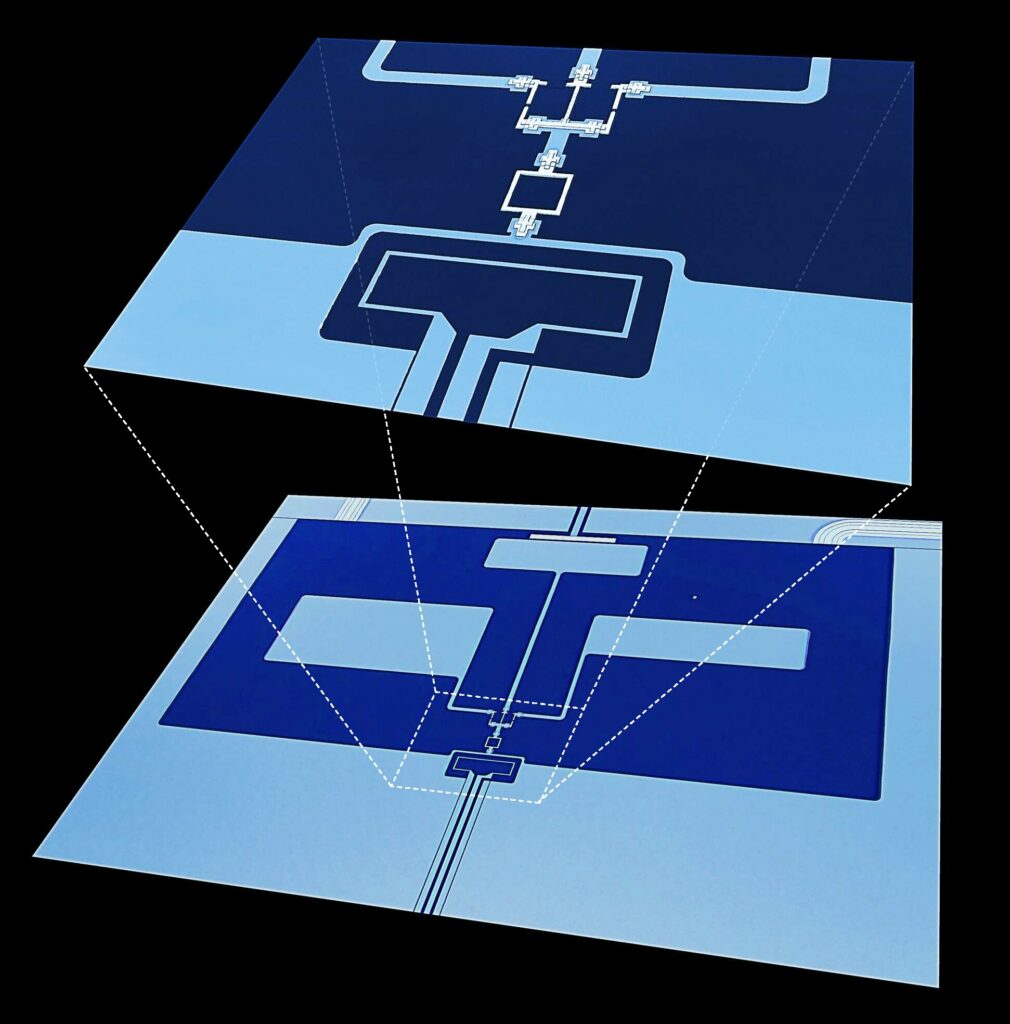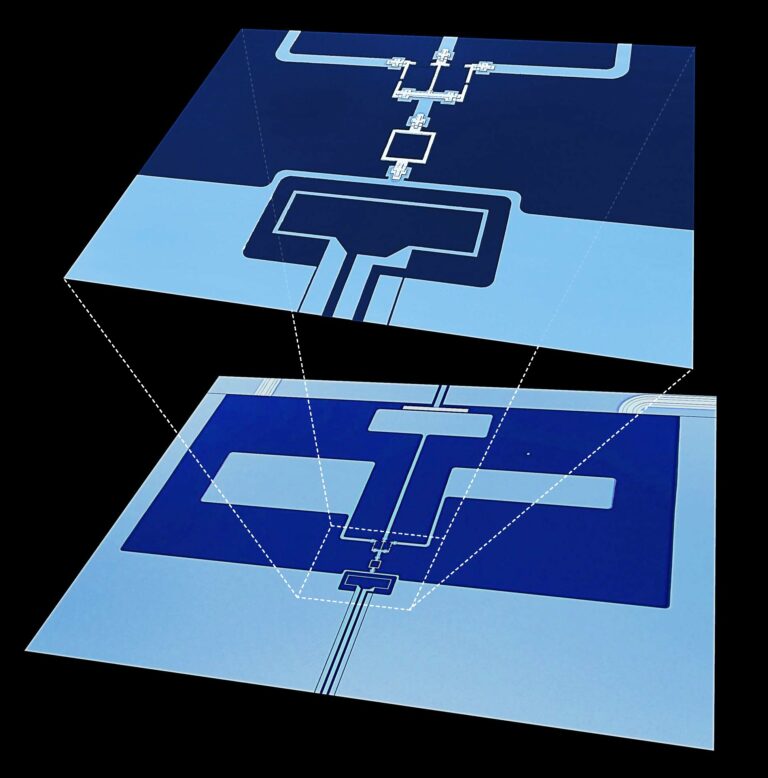Innovative ‘Toggle-Switch’ Holds Promise for Enhanced Quantum Processors with Clearer Outputs
What’s the use of a powerful computer if you can’t decipher its output or easily reprogram it for different tasks? Designers of quantum computers grapple with these challenges, and a novel device developed by a team of scientists at the National Institute of Standards and Technology (NIST) aims to provide solutions.
This device incorporates two superconducting quantum bits, or qubits, analogous to the logic bits in classical computer processing chips. At its core, the innovative strategy features a “toggle switch” device connecting the qubits to a “readout resonator” circuit, responsible for reading the qubits’ calculations.
The toggle switch can be adjusted into various states to modify the strength of connections between the qubits and the readout resonator. When toggled off, all three elements are isolated. When switched on to link the two qubits, they can engage in interactions and perform calculations. Subsequently, after completing the calculations, the toggle switch can connect either qubit and the readout resonator to retrieve the results.
The presence of a programmable toggle switch significantly mitigates noise, a common issue in quantum computer circuits that hinders qubits from conducting calculations and presenting clear results. Ray Simmonds, a NIST physicist and one of the paper’s authors, explained, “The goal is to keep the qubits happy so that they can calculate without distractions, while still being able to read them out when we want to. This device architecture helps protect the qubits and promises to improve our ability to make the high-fidelity measurements required to build quantum information processors out of qubits.”

The team, comprised of scientists from the University of Massachusetts Lowell, the University of Colorado Boulder, and Raytheon BBN Technologies, along with the National Institute of Standards and Technology (NIST), has detailed its findings in a paper published on June 26 in Nature Physics. Quantum computers, still in their early developmental stages, aim to utilize the peculiar principles of quantum mechanics for tasks deemed challenging for even the most powerful classical computers, such as conducting intricate simulations of chemical interactions to aid in drug development. Despite their potential, quantum computers face various challenges, including susceptibility to external or internal noise, often resulting from defects in the materials used for construction.
Such noise, characterized by essentially random behavior, can introduce errors in qubit calculations. The conventional static architecture of many quantum computers, where each qubit is physically interconnected to its neighbors and readout resonator, contributes to noise and lacks easy reprogramming capabilities. The team’s innovative solution introduces a programmable toggle switch, addressing these issues.
The toggle switch prevents circuit noise and unwanted qubit interactions while offering programmability and flexibility in reprogramming quantum computers. The team envisions that integrating multiple toggle switches could lead to a more easily programmable and versatile quantum computer. Ray Simmonds, a NIST physicist and one of the authors, explained the benefits of the toggle switch, including its ability to minimize noise and enable the measurement of both qubits simultaneously, a crucial factor for identifying quantum computational errors. The toggle switch operates through microwave pulses, providing remote control over the opening and closing of switches between elements, offering a programmable and adaptable approach.
The demonstration involved two qubits and a single readout resonator, all constructed with superconducting components requiring extremely low temperatures for operation. The toggle switch itself, made from a superconducting quantum interference device (SQUID), responds to magnetic fields to induce interactions between qubits and the readout resonator as needed. The team plans to expand their research, designing configurations with three qubits and a readout resonator, with future plans to incorporate additional qubits and resonators. This ongoing research aims to explore the possibilities of constructing powerful quantum computers with sufficient qubits to tackle currently insurmountable problems.
This article is republished from PhysORG under a Creative Commons license. Read the original article.
Do not forget to share your opinion with us to provide you with the best posts !




0 Comments